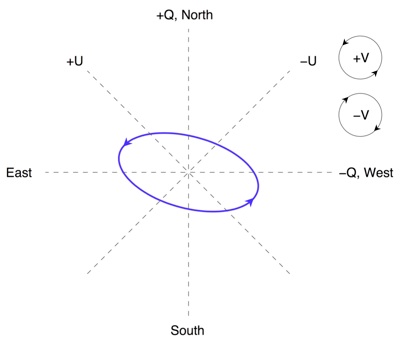Direct Detection of Exoplanets with Optical Polarimetry (2)
Polarimetry Conventions

Observationally, polarization is defined by so-called “Stokes parameters”
-
• Linear polarization is described by Stokes Q (North-South minus East-West electric fields) and Stokes U (Northeast-Southwest minus Northwest-Southeast fields)
-
• Circular polarization is described by Stokes V (right- or left-handed fields)
Scattering processes generally impart polarization to the beam, and scattering of starlight off gas molecules, aerosols, and cloud particles in exoplanet atmospheres, as well as scattering off solid or liquid surfaces, polarizes starlight as well.
Polarization is a vector quantity, contrasted with the scalar nature of photometry, so the additional information content allows the following to be studied:
-
• Orbital inclination and resolution of M sin i mass ambiguity
-
• Albedo and presence of clouds
-
• Scattering particle composition